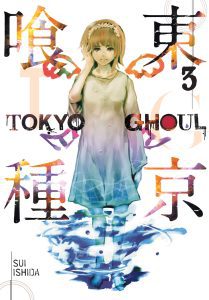Title: The Power of Art
Author: Simon Schama
First published January 1, 2006
448 pages, Hardcover
ISBN: 9780061176104 (ISBN10: 0061176109)
Rating: 3.92
Overview
In his book, The Power of Art, Simon Schama presents a riveting exploration of the force behind the greatest and most impactful art pieces of all time. Schama draws us in with an astute observation, “Great art has dreadful manners” and goes on to explore how these masterpieces are not meek, polite or soothing but instead merciless and cunning, grabbing you in a headlock and rearranging your sense of reality.
Schama takes us through an awe-inspiring, breathtaking journey, focusing on eight extraordinary works of art, from Caravaggio’s David and Goliath to Picasso’s ‘Guernica’. He examines the lives of eight artists who, in the face of extreme stress, created something unprecedented, altering the course of art forever.
The embattled heroes–Caravaggio, Bernini, Rembrandt, David, Turner, Van Gogh, Picasso and Rothko–each faced crisis with steadfast defiance, pitting passion and conviction against scorn and short-sightedness. With vivid storytelling and powerfully evocative descriptive passages, Schama explores the dynamic personalities of the artists and the spirit of the times they lived through, capturing the flamboyant theatre of bourgeois life in Amsterdam, the passion and paranoia of Revolutionary Paris, and the carnage and pathos of Civil War Spain.
In The Power of Art, Schama beautifully captures the evolution of eight world-class works of art, unveiling how these pieces reveal something about how the world is, how it is to be inside our skins, and what art is really for.
About the Author
Simon Schama was born in 1945 in Leigh-on-Sea, Essex to a textile merchant father and Lithuanian and Turkish grandparents. He developed a passion for English and History during his scholarship to Haberdashers’ Aske’s School, but ultimately chose to pursue history at Christ’s College, Cambridge under the tutelage of Sir John Plumb.
Plumb’s emphasis on the importance of narrative and written style in making history accessible to a wider audience left a lasting impact on Schama’s work, which is known for its vivid descriptions.
After completing his degree, Schama remained at Christ’s for ten years as a fellow and director of studies before moving to Brasenose College, Oxford. While at Oxford, he wrote “Patriots and Liberators” (1977), which won the Wolfson Literary Award, and “Two Rothschilds and the Land of Israel” (1979).
It was also at Oxford where he met his future wife, Ginny Papaioannou, a geneticist from California.
However, Schama grew tired of the Oxford system and its constraints, describing it as being “like a gerbil on a treadmill.” In 1980, he moved to the United States to become a professor of history at Harvard, where he wrote “The Embarrassment of Riches” (1987), “Citizens” (1989), and “Dead Certainties” (1991), which won the NCR Book Award. However, his controversial approach to the French Revolution in “Citizens” and his argument that it was a “terror from the start” led to the book being rejected by French publishers.
Schama later became a professor of history and art history at Columbia University, where he wrote “Landscape and Memory” (1996), which received the W.H. Smith Literary Award, and “Rembrandt’s Eyes” (1999), a reassessment of the artist’s life and work that aimed to restore the notion of Rembrandt as a genius. Schama has also worked on a 16-part series for the BBC called “A History of Britain” and has been an art critic and cultural essayist for various publications.
Today, Schama lives in New York with his wife and two children, Chloe and Gabriel.
Editoral Review
Simon Schama’s The Power of Art is a masterful tour de force that brings to life the great works of art that have shaped human history. Schama is a renowned scholar and historian, who has written extensively on art, culture, and politics.
In this book, he focuses on eight pivotal artists who have had a profound impact on the world of art: Caravaggio, Bernini, Rembrandt, David, Turner, Van Gogh, Picasso, and Rothko. Through their stories, he explores the power of creativity, imagination, and vision.
Schama’s writing style is rich and evocative, blending historical fact with engaging anecdotes and personal reflections. He brings to life the personalities of each artist, revealing their struggles, triumphs, and failures, and how they transformed the artistic landscape of their time.
He also explores the social and cultural contexts in which they lived and worked, and how their art reflects and challenges the prevailing norms and values of their society. The book is organized into eight chapters, each dedicated to one artist.
The chapters are arranged thematically, highlighting different aspects of the artist’s work and career. For example, the chapter on Caravaggio focuses on his radical use of light and shadow, while the chapter on Van Gogh examines his mental illness and its impact on his art.
Schama’s critical analysis is insightful and thought-provoking, as he explores the stylistic and thematic elements of each artist’s work. He examines their techniques, themes, and symbolism, and how they influenced and were influenced by other artists of their time.
He also explores the cultural contexts in which their work was created and how it reflects the political, social, and economic forces of their society. One of the strengths of Schama’s book is his ability to connect the art of the past with the present, and how it continues to resonate in our contemporary world.
He makes compelling arguments about how the art of the past still speaks to us today, and how it can help us to understand ourselves and our world better. One weakness of the book is that it may be opaque to readers who are not well-versed in art history or critical theory.
Schama assumes a level of knowledge that may be daunting to some readers, and he uses a lot of technical terms and jargon that may be unfamiliar to non-experts. Overall, The Power of Art is a fascinating and insightful book that will appeal to anyone interested in art, culture, and history.
It is beautifully written and richly illustrated, making it a pleasure to read and look at. It is an essential book for anyone who wants to deepen their understanding of the power of art and its role in shaping human history.
Rating: 4.5/5
Recommended for: Art lovers, history buffs, cultural critics, and anyone who wants to explore the power of creativity and imagination.



